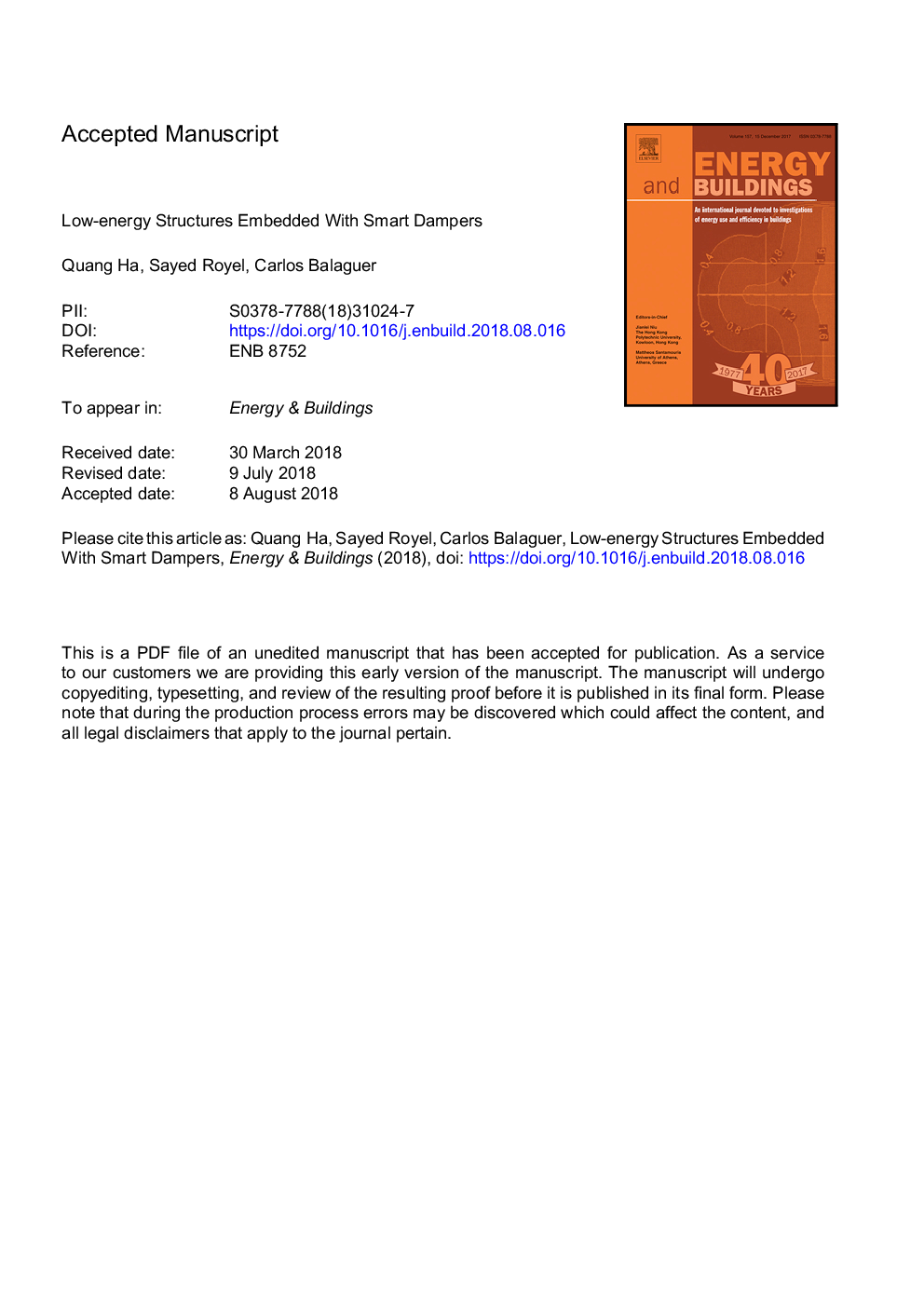| کد مقاله | کد نشریه | سال انتشار | مقاله انگلیسی | نسخه تمام متن |
|---|---|---|---|---|
| 10126886 | 1645006 | 2018 | 30 صفحه PDF | دانلود رایگان |
عنوان انگلیسی مقاله ISI
Low-energy structures embedded with smart dampers
ترجمه فارسی عنوان
ساختارهای کم انرژی که با دمپرهای هوشمند تعبیه شده اند
دانلود مقاله + سفارش ترجمه
دانلود مقاله ISI انگلیسی
رایگان برای ایرانیان
کلمات کلیدی
ساختار کم انرژی آرام سازی هوشمند، از بین بردن انرژی، مدل سازی و کنترل، حالت کشویی فرکانس شکل، دمپر مغناطیسی
موضوعات مرتبط
مهندسی و علوم پایه
مهندسی انرژی
انرژی های تجدید پذیر، توسعه پایدار و محیط زیست
چکیده انگلیسی
Building structures, subject to dynamic loadings or external disturbances, may undergo destructive vibrations and encounter different degrees of deformation. Modeling and control techniques can be applied to effectively damp out these vibrations and maintain structural health with a low energy cost. Smart structures embedded with semi-active control devices, offer a promising solution to the problem. The smart damping concept has been proven to be an effective approach for input energy shaping and suppressing unwanted vibrations in structural control for buildings embedded with magnetorheological fluid dampers (MRDs). In this paper, the dissipation energy in MRD is studied by using results from induced hysteretic effect of structural vibrations while the fluid is placed under a controlled magnetic field. Then, a frequency-shaped second-order sliding mode controller (FS2SMC) is designed along with a low-pass filter to implement the desired dynamic sliding surface, wherein the frequency responses of the hysteretic MRD is represented by its magnitude and phase describing functions. The proposed controller can thus shape the frequency characteristics of the equivalent dynamics for the MRD-embedded structure against induced vibrations, and hence, dissipate the energy flow within the smart devices to prevent structural damage. Simulation results for a 10-floor building model equipped with current-controlled MRDs, subject to horizontal seismic excitations validate the proposed technique for low-energy structures with smart devices. The closed-loop performance and comparison in terms of energy signals indicate that the proposed method allows not only to reduce induced vibrations and input energy, but also its spectrum can be adjusted to prevent natural modes of the structure under external excitations.
ناشر
Database: Elsevier - ScienceDirect (ساینس دایرکت)
Journal: Energy and Buildings - Volume 177, 15 October 2018, Pages 375-384
Journal: Energy and Buildings - Volume 177, 15 October 2018, Pages 375-384
نویسندگان
Quang Ha, Sayed Royel, Carlos Balaguer,
